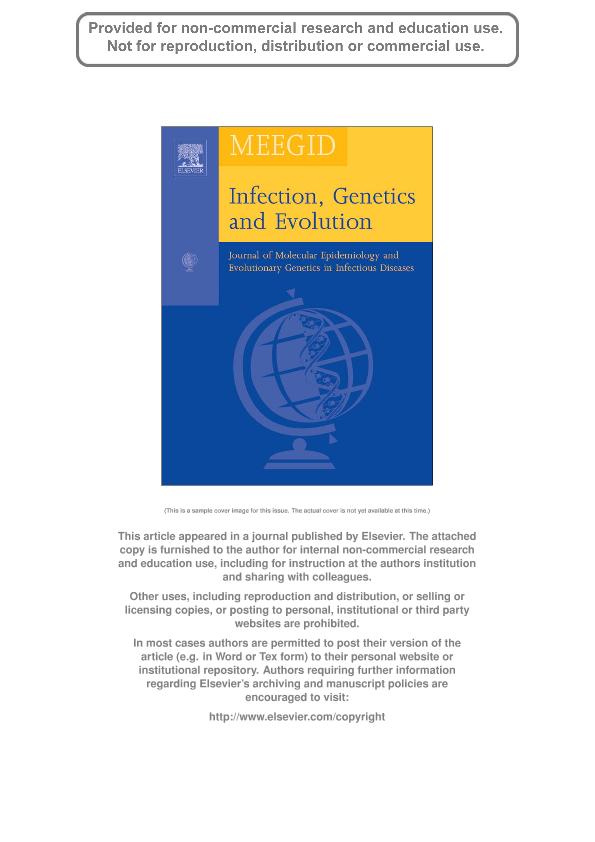Artículo
Babesia: a world emerging
Fecha de publicación:
03/2012
Editorial:
Elsevier Science
Revista:
Infection, Genetics and Evolution
ISSN:
1567-1348
Idioma:
Inglés
Tipo de recurso:
Artículo publicado
Clasificación temática:
Resumen
Babesia are tick-transmitted hemoprotozooans that infect mammals and birds, and which are acknowledged for their major impact on farm and pet animal health and associated economic costs worldwide. Additionally, Babesia infections of wildlife can be fatal if associated with stressful management practices; and human babesiosis, also transmitted by blood transfusion, is an increasing public-health concern. Due to the huge diversity of species reported to serve as Babesia hosts, all vertebrates might be potential carriers, as long as they are adequate hosts for Babesia-vector ticks. We here provide a comprehensive overview of the most relevant Babesia species, and a discussion of the classical taxonomic criteria. Babesia, Cytauxzoon and Theileria parasites are closely related and collectively referred to as piroplasmids. A possible scenario for the history of piroplasmids is presented in the context of recent findings, and its implications for future research avenues are outlined. Phylogenetic trees of all available 18S rRNA and hsp70 genes were generated, based on which we present a thoroughly revised molecular classification, comprising five monophyletic Babesia lineages, one Cytauxzoon clade, and one Theileria clade. Updated 18S rRNA and beta-tubulin gene trees of the B. microti isolates agree with those previously reported. To reconcile estimates of the origin of piroplasmids and ticks (∼300. Ma, respectively), and mammalian radiation (60. Ma), we hypothesize that the dixenous piroplasmid life cycle evolved with the origin of ticks. Thus, the observed time gap between tick origin and mammalian radiation indicates the existence of hitherto unknown piroplasmid lineages and/or species in extant vertebrate taxa, including reptiles and possibly amphibians. The development and current status of the molecular taxonomy of Babesia, with emphasis on human-infecting species, is discussed. Finally, recent results from population genetic studies of Babesia parasites, and their implications for the development of pathogenicity, drug resistance and vaccines, are summarized.
Archivos asociados
Licencia
Identificadores
Colecciones
Articulos(SEDE CENTRAL)
Articulos de SEDE CENTRAL
Articulos de SEDE CENTRAL
Citación
Schnittger, Leonhard; Rodriguez, Anabel Elisa; Jacobsen, Monica Ofelia; Morrison, David A.; Babesia: a world emerging; Elsevier Science; Infection, Genetics and Evolution; 12; 8; 3-2012; 1788-1809
Compartir
Altmétricas




